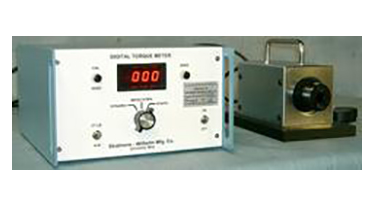Loosening Torque Testing Method
Torque is always a critical element of the overall formula every time a fastener is used to form a joint between two parts. Making sure that a tightened fastener is installed correctly to the pre-defined torque specifications will go a long way in determining the success or failure of the product. Therefore, torque testing is crucial to identifying and lowering any possible fastening failures.

Torque can be defined as the specific angular force required to turn an object. For instance, torque can refer to the force needed to turn your steering gear as you navigate a sharp corner or the overall power supplied by an airplane’s engine to turn the propellers.
Torque testing entails measuring and determining the total amount of torque applied to a particular object.
How Is Torque Measured?
The testing is done by inserting a standard torque transducer device between the product against which torque is being applied and the tool applying the force.
The two different techniques to torque measurement are in-line and reaction. The in-line method usually measures the specific torque that is required to turn a rotating part while the reaction method measures the quantity of torque necessary to stop the particular object part from rotating. Keep in mind that both ways use specialized sensors.
Why Is Torque Testing Essential?
Most experts don't realize the fact that a bolt and a nut aren't designed for AC to flow through them. In fact, the bolt offers much resistance to the flow of the electric current.
However, when the right amount of torque is applied to the bolt, it lowers the resistance to the electrical current, which is a good idea. Current tends to flow in the path with the lowest resistance. Therefore, if the resistance of the copper connection is lower than that of the bolt, then the whole current will flow through the copper and not the bolt, and that is the primary reason why torque testing is important.
The three conventional torque testing methods are:
- The movements check
- The loosening check
- The marking check
Loosening Torque Testing Method
The loosening torque testing method is commonly referred to as the breakaway testing method, and it is quite similar to the first movement method. The fundamental difference between the two ways is that when it comes to the loosening method, instead of applying force in the tightening direction of your fastener, you now apply it in the direction that tends to loosen the fastener.
You need to pay greater attention to the torque transducer and not the reading at the precise position that the bolt breaks loose. This is the total amount of torque required to loosen that specific bolt.
How Is the Loosening Method Done?
Performing the loosening torque testing method isn’t complicated. Simply take a bolt or screw that is tightened and start to loosen it progressively. Be keen and record the exact torque reading when the fastener becomes loose. The torque value necessary to loosen the fastener will be the approximate force that was exerted to the joint.
Most people consider loosening the easiest method to perform since it’s straightforward. However, keep in mind that the torque required to loosen the fastener may not always correlate to the torque applied to the joint.
Take time to audit all assembled tools ranging from the low-cost equipment to sophisticated fastening tools. The purpose of this audit is to verify the accuracy and ensure that all repeatability performance goals are well maintained. A review is also vital in detecting and preventing fastening failures.
Utilizing the right torque is an essential part of any reliable joint bolt. Insufficient torque will cause the joint to be loosened easily by vibrations while excess torque can lead to the overstretching and breaking of your bolts. It is also good to perform regular audits once the correct torque has been established to ensure that you are always reaching your targets.
Have questions about torque? Talk to the Aztec Bolting experts.





